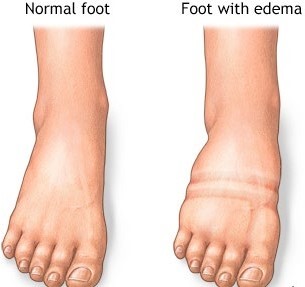While in the dining room at the hospital, the nurse notes a visitor has forceful coughs. Which actions would the nurse take to assist this visitor?
Select all that apply:
Start cardiopulmonary resuscitation (CPR).
Assist the client to a sitting position on the floor.
Allow the visitor to cough.
Assess for a weak ineffective cough.
Perform the Heimlich maneuver.
Correct Answer : C,D
If a visitor in the dining room at the hospital has a forceful cough, the nurse should first allow the visitor to continue coughing. Coughing is a natural reflex that helps clear the airway of foreign objects or mucus. The nurse should also assess the effectiveness of the cough. If the cough is weak or ineffective, further intervention may be necessary.
Starting cardiopulmonary resuscitation (CPR) or performing the Heimlich maneuver would only be appropriate if the visitor is choking and unable to breathe. Assisting the client to a sitting position on the floor may not be necessary and could potentially cause harm.
Nursing Test Bank
Naxlex Comprehensive Predictor Exams
Related Questions
Correct Answer is D
Explanation
In this situation, the nurse demonstrated integrity. After realizing the mistake of giving a client who was NPO a morning breakfast tray, the nurse took responsibility for the mistake by notifying the physician and the client, explaining the consequences of the mistake, and documenting the situation in the client's medical record. The other options (Altruism, Human dignity, and Social justice) are not directly related to this situation.
Correct Answer is A
Explanation
A diuretic is a medication that increases the production of urine by the kidneys. This can help reduce swelling (edema) by removing excess fluid from the body. If a client is prescribed a diuretic for swelling of the lower extremities, the nurse should teach the client that the medication will increase their urinary output. This means that the client will need to urinate more frequently and may produce more urine than usual. The color and odor of the urine may also change, but these changes are not directly related to the effect of the medication on urinary output.

Whether you are a student looking to ace your exams or a practicing nurse seeking to enhance your expertise , our nursing education contents will empower you with the confidence and competence to make a difference in the lives of patients and become a respected leader in the healthcare field.
Visit Naxlex, invest in your future and unlock endless possibilities with our unparalleled nursing education contents today
Report Wrong Answer on the Current Question
Do you disagree with the answer? If yes, what is your expected answer? Explain.
Kindly be descriptive with the issue you are facing.
